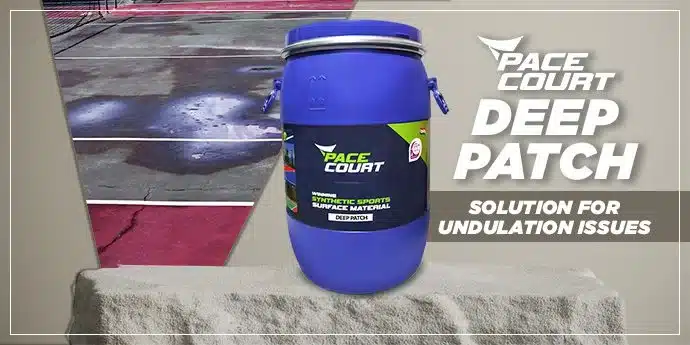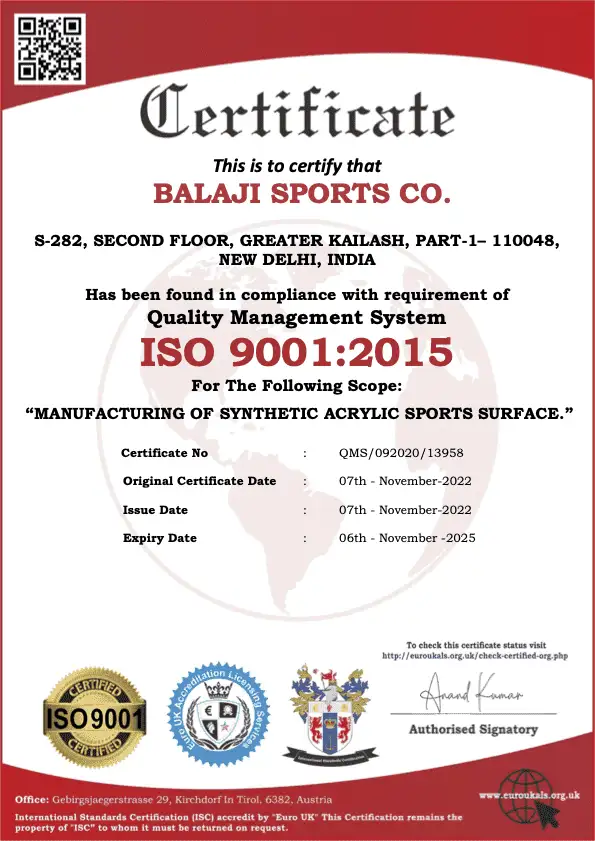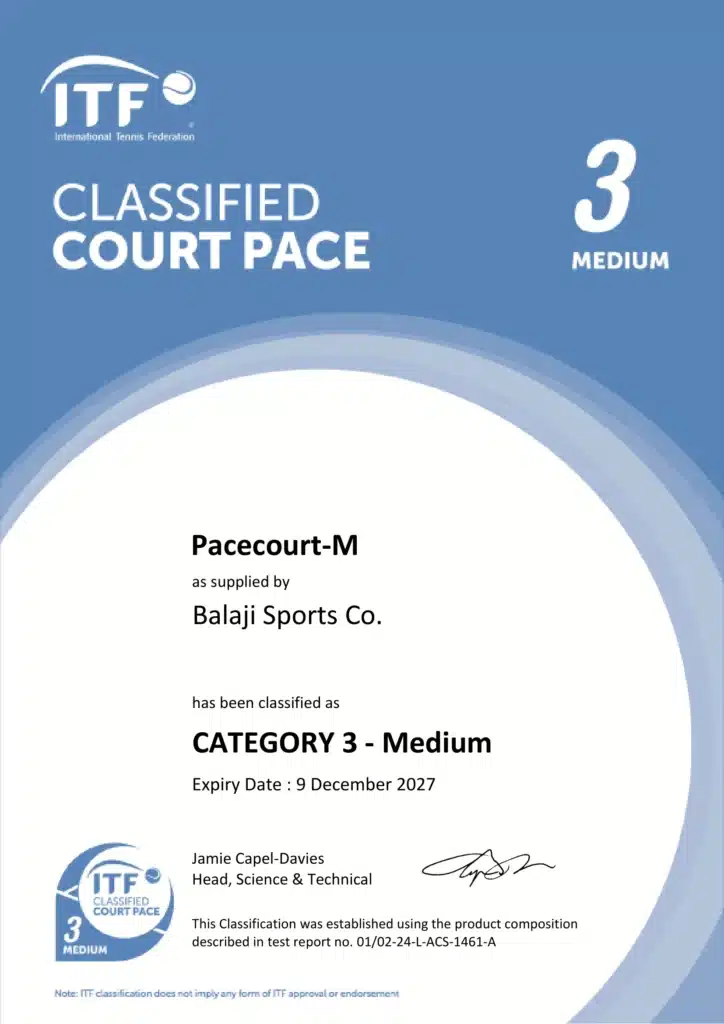Pacecourt Deep Patch: Essential for Sports Surface Cracks
Introduction While cracks on a sports surface may not seem like a big issue, they can actually be quite dangerous and affect how you play. Because of this, at Pacecourt, we take proper care of our surfaces to maintain them in good condition and, even better, to help your players use them longer. In this guide, we will look into the merits of using Pacecourt Deep Patch to fill cracks in acrylic floors for sport activities, a step-by-step application procedure, tips on maintaining it, as well as practical case studies showing its efficacy. We at Pacecourt appreciate the importance of sports surfaces in the sports arena. Hence, we have come up with a synthetic acrylic repair material known as Pacecourt Deep Patch, designed uniquely to handle cracks and imperfections in sports surfaces in an unmatched way when it comes to accuracy and durability factors. Our Deep Patch solution possesses exceptional toughness, full integration, easy application that works fast, and undying attention to safety concerns. It has therefore become the best option available so far when it comes to preserving the quality of sporting venues. Understanding the Problem: Why Do Sports Surfaces Crack? Before solving the issue, it is important to know what causes cracks in sports surfaces. Outdoor sports courts face different physical and environmental stresses regardless of their type, whether made using asphalt or concrete materials. Some of the frequent causes include: Weather Extremes But they will be muted by the outflows from the rapid expansion of the materials given them. This phenomenon is especially true in areas with freezing and thawing cycles. Heavy Use Cracks can be caused by lots of players, equipment moving around, and maintenance vehicles each day. Poor Installation When there is improper installation of the materials or if substandard materials are used, it could lead to a surface that will not last for a long time, making it easier to crack. Ground Movement Shifts under the courtroom floor can create structural pressure that causes cracks. It is common in places where there are occurrences of seismic movements or when the soil is unstable. Why Choose Pacecourt Deep Patch? In order to fix these problems, Pacecourt Deep Patch was developed to withstand heavy use over time and give results for a long time. This is why it is the most effective option: Superior Adhesion The glue of Pacecourt Deep Patch molds into lines seen everywhere in asphalt and concrete. With this kind of bond, it becomes impossible to recognize physical failure points or locations needing repair compared to other types of materials, which are often exposed to cracks or crevices that collect more dirt than anything else. Flexibility The Pacecourt deep patch formulation has been designed expressly to enable it to keep pace with the movements of the earth’s surface beneath. This adaptability helps it endure severe weather conditions as well as constant usage; hence, this is very appropriate in outdoor sport fields. Fast Curing Quick healing happens due to our profound patching system, which enables just a little bit of break. Facilities require this, particularly when they want to keep their courts in operation. Aesthetic Match Pacecourt Deep Patch is especially designed to be color matched so that it will blend perfectly into the existing surface, leaving the aesthetic appeal of your court intact. Application Process Applying Pacecourt Deep Patch is straightforward, but following the correct procedure is crucial for optimal results. Here’s a step-by-step guide: Surface Preparation Make sure that the area around the cracking is thoroughly cleaned. Get rid of any loose debris, dirt, or old patch material in it. A sharp-edged wire brush should be used to clean deeper areas, while a pressure washer will do a better job than it if you want to apply water. Before proceeding, let the surface dry up completely. Crack Evaluation and Preparation Assess the size and depth of your crack. On larger cracks, you may need to widen it a little so that the deep patch materials fill up well. Use a chisel or grinder and open it uniformly for this purpose. Mixing the Deep Patch Material In accordance with the directions provided by its producer, mix together a deep-patch substance. It needs to have a smooth and easy-to-apply consistency. Best results come from using a mechanical mixer for this purpose, as it makes sure that everything is homogeneous. Application Apply deep patch material with a trowel or other tool, working one end of the crack along its length, making sure it’s full. Smooth the surface to blend with the surrounding area. Curing As per the recommendations mentioned above, let the material cure for a specified amount of time. The curing periods may differ depending on weather conditions such as temperature and rainfall levels. Do not use the ground during this time so that you do not interfere with them. Finishing Touches For aesthetic harmony, this step is optional but suggested. Once the patch has healed, applying a finish coat or paint that blends in with the rest of the court is a natural solution. Maintenance Tips To avoid manufacturing cracks in the future and ensure that your Pacecourt Deep Patch repairs last longer, it is important to keep your sports court well maintained. Below are a few tips: Regular Inspection Regularly inspect your court for signs of fresh cracks and other damages. Early detection makes it possible to make timely repairs, thus stopping little concerns from developing into major challenges. Routine Cleaning Eliminate rubbish, foliage, and soil from the court to ensure its cleanliness. This stops these materials from getting into the cracks and making them worse. When needed, a broom, leaf blower, or even a pressure washer can be used. Proper Use Make sure that players and maintenance staff employ the court correctly. The court should never be used for any activities that could cause damage to its surface, including the use of the wrong equipment or driving cars on it. Seasonal Care When it’s really hot or freezing outside, exercise




